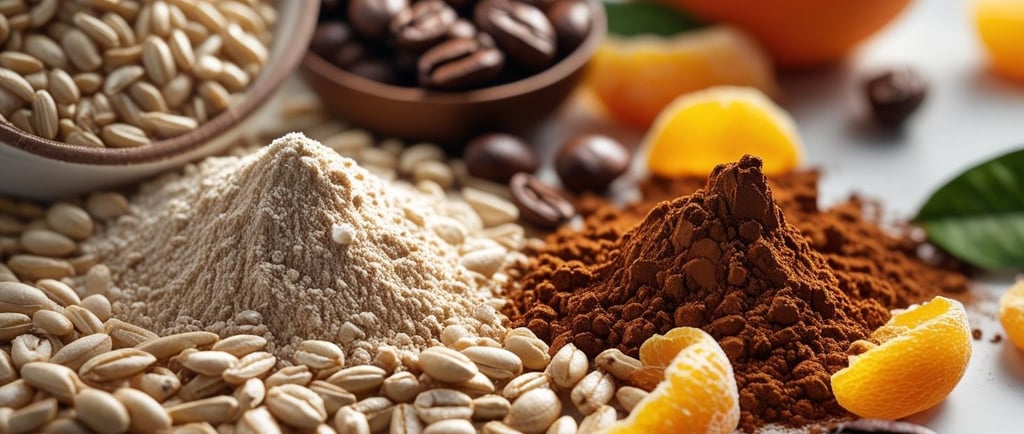From Waste to Win: How Upcycled Ingredients Are Fueling Clean‑Label Innovation
Discover how upcycled ingredients are transforming clean-label food and beverage innovation. Learn about functional nutrition, sustainability, and sourcing strategies that turn food waste into high-performance ingredients consumers trust.


Once considered an afterthought, upcycled ingredients have morphed into a Strategic linchpin in the clean-label economy. Why? Because they transform waste into nutrition, for both your brand and the planet.
This isn’t guesswork. The Upcycled Food Association reports the category grew from $53.7 billion in 2021 to a forecasted $97 billion by 2031, with a steady ~6 % CAGR. Today’s consumers? More than half say they’re likelier to buy products that reduce food waste.
For CPG brands focused on clean-label wellness, the choice isn’t optional, it’s strategic. Here’s how smart brands are turning byproducts into brand builders.
1. Waste Isn’t Waste, It’s Nutrient Gold
Ingredients like apple pomace, brewer’s spent grain, and coffee cherry are showing up in everything from fiber-boosted bars to antioxidant-rich drinks. These byproducts aren’t just sustainable, they’re functional.
For example:
Brewer’s grain upcycled into protein/fiber flour
Coffee fruit (cascara) transformed into antioxidant-packed powder
Orange peels and tomato pulp incorporated into clean-label sauces and snacks
These ingredients deliver nutrition and story, two key drivers in wellness shelf success.
2. Clean Label Meets Circular Innovation
Global consumers are more eco-conscious than ever. According to the UFA, over 50% of shoppers are more likely to purchase products labeled “upcycled certified”. And the product promise? It hits the sweet spot, clean-label, transparent, and socially responsible.
North America leads the charge, holding roughly 38% of the upcycled ingredient market, followed by Europe, Asia‑Pacific, and Latin America.
In other words: upcycling isn’t a fringe trend, it’s central to clean, modern sourcing.
3. Innovation, and Investment, Are Following the Money
Upcycled ingredients now power a market projected to hit $74.8 billion by 2029. Support isn’t just from green consumers, it's from innovators. Think drying, fermentation, enzymatic extraction, even AI-driven waste tracking that ensures consistent specs.
That means higher-quality fibers, cleaner flavors, and scalable supply, even with variable inputs.
4. Sourcing Success Doesn’t Happen by Accident
Upcycled ingredients come with sourcing complexity. Not every producer can guarantee food safety, quality consistency, and traceable origins.
Brands need to vet partners who can deliver:
Stable specs (taste, color, functional performance)
Documented COAs, traceability records, and certifications
Supply scaling as you grow, from pilot to production
Smart brands also hedge risk with dual sourcing or blending, so one drought or crop variance doesn't derail your entire product line.
5. Brands Are Embracing Purpose and Performance
Upcycling isn’t just ethical, it’s profitable. Brands using certified upcycled ingredients (like Renewal Mill, Barnana, and Pulp Pantry) are attracting consumer love and shelf attention.
Retailers are paying attention too: dedicated upcycled product sections are gaining visibility in natural, grocery, and e‑commerce channels.
Final Thought: Upcycling Isn’t Just Sustainability, It’s Smart Strategy
It’s time to think beyond color or functionality. Upcycled ingredients can elevate your brand's innovation story while providing real, functional benefit.
At Epicurio, we help you:
Identify nutritionally valuable byproducts
Source from reliable, certified suppliers
Scale sourcing with confidence, and document every step of the journey
Because in the clean-label game, using less waste can help you say more to your customers.
Ready to bring upcycled innovation into your next product? Let’s talk sourcing.
